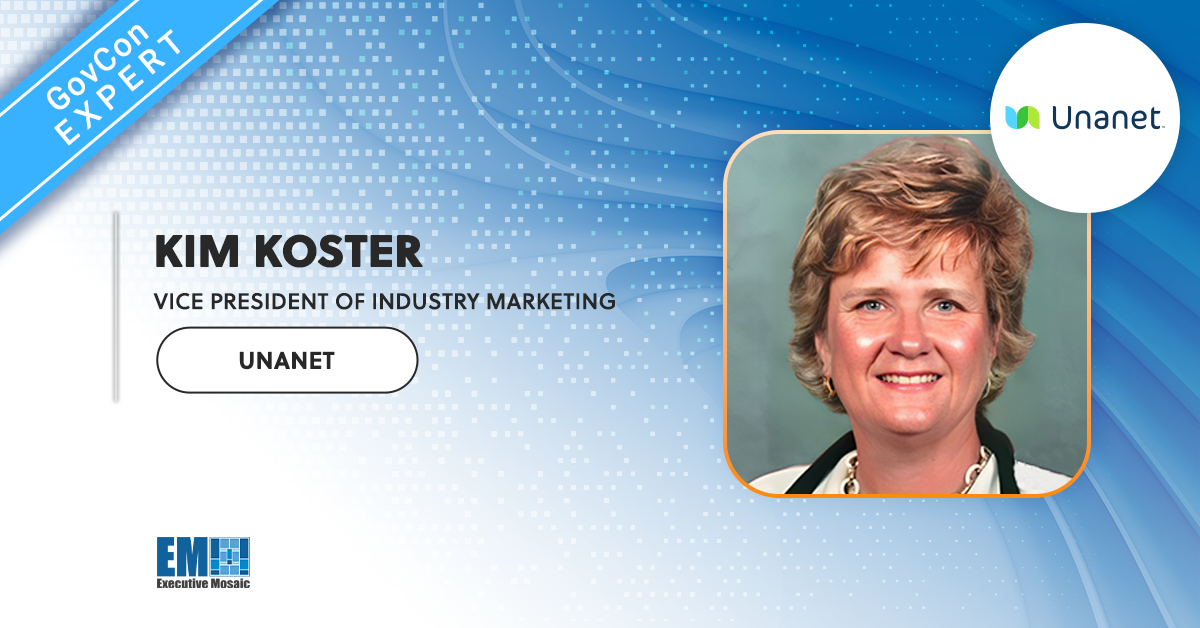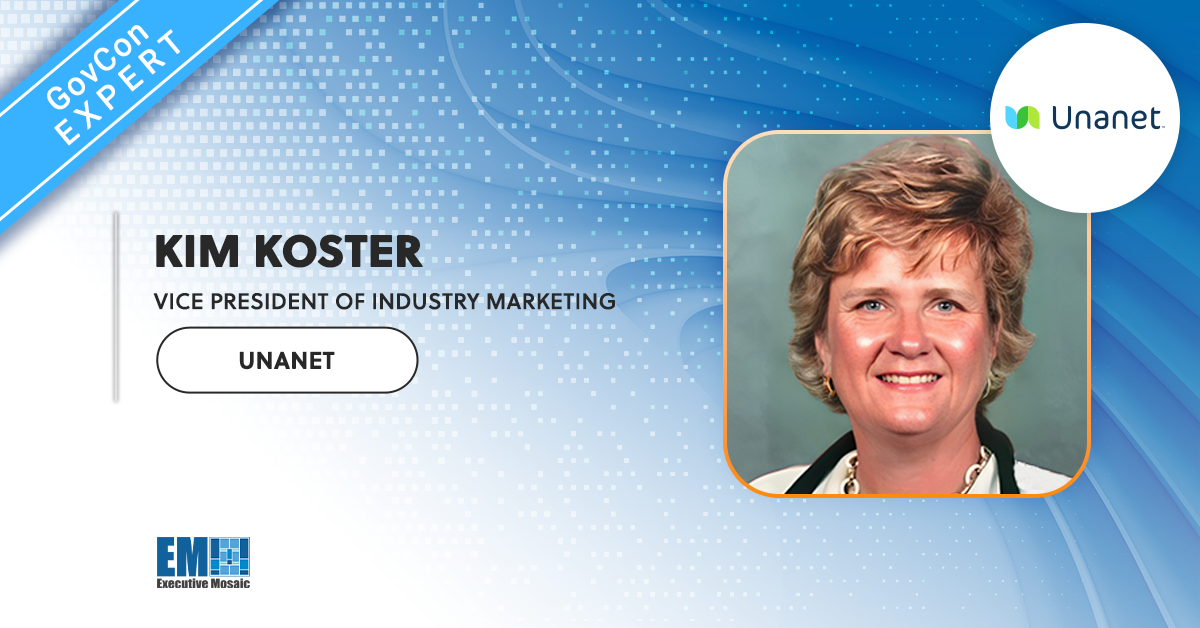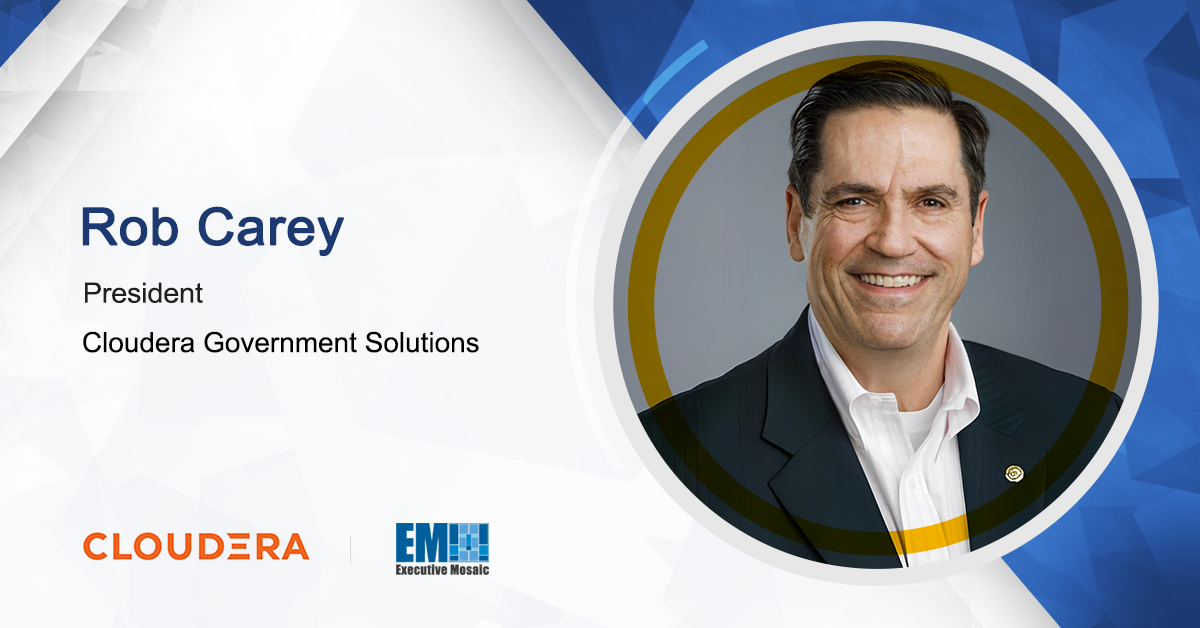By Kim Koster, VP of Industry Marketing at Unanet
Generative AI, business AI, natural language processing, ChatGPT — AI in all its iterations has thrust us, ready or not, into a technological frontier like none we’ve experienced before.
How will AI change the way we work? How do the risks of using it compare to the benefits? What unexpected realities will it bring? What opportunities will it open for our customers and the industries we serve? Here at Unanet, we’re contemplating questions like these every day. And now we’re beginning to see clear business use cases for AI emerge, especially when it’s embedded in the software platforms that government contractors rely upon to run their businesses and their projects more efficiently and profitably.
For GovCons, the combination of AI and structured, domain-relevant data appears particularly promising. The labyrinthine world of government contracting is a difficult one to navigate. It’s a business that can invite and exacerbate inefficiencies and confound a firm’s efforts to bring projects to a successful, profitable conclusion. That’s where AI can really prove its value, especially to small-to-midsized GovCon businesses. For them, AI can level the playing field with much larger competitors by simplifying operations, boosting efficiency and ultimately strengthening firm profitability by automating tedious, repetitive tasks and ensuring data is valid, compliant and consistent.


If you want to find out about the top AI-related priorities for the federal government — especially the Department of Defense — save the date and register for Potomac Officers Club’s 5th Annual AI Summit, to be held in Tysons Corner, Virginia on March 21st. Dr. William Streilein, chief technology officer of the DOD’s Chief Digital and Artificial Intelligence Office, will be among the featured speakers.
One thing we’ve learned about AI is that unlocking its business value is not automatic. You can’t just sprinkle some magic AI dust on a GovCon firm’s operations and get results. Rather, to realize measurable, sustainable benefits from AI, firms first must lay the groundwork in terms of data quality and accessibility. On top of that strong data foundation, you’ll need AI capabilities built specifically for GovCons, not just a generic solution. The combination of industry-tailored AI capabilities and industry-specific data is likely to yield the most value in terms of actionable insight and automation.
GovCons also need to ensure the intelligent capabilities they’re investing in, whatever platform or app they’re embedded within, are “business easy” — that they’re easy to use, and that the findings they produce are easy to understand and straightforward to apply.
With those foundational elements in place, GovCon firms can begin leveraging AI to:
- Better capture information about the contacts and companies that drive their business.
- Find and extract contact information buried in emails, then enable users to add them to their customer relationship management, or CRM, system in real time from their email.
- Automatically detect when new or updated details about your CRM contacts are posted to social media or other public sources so your contact data is always up to date.
- Research a potential client and automatically create a company record in your CRM database based on its findings.
- Provide intelligent caller ID that recognizes and logs when a business contact calls your mobile phone without needing to store your CRM data on your device.
- Detecting mismatched data in different areas of the product.
- Detecting and alerting automatically when project milestones or cost limits are hit or passed.
- Automating expense receipt ingestion and cost allocation to projects and contracts for faster invoicing.
- Providing a compliance backstop by understanding regulatory requirements and automatically checking costs, procedures and reports for errors.
And we’re only just scratching the surface. Instead of just trusting their instincts, GovCons will soon be able to use AI to help identify which business opportunities they should pursue, and to predict the likelihood of winning specific pursuits. They’ll also be able to use AI to automate invoice management and payment, fast-track a wide range of processes (including data validation), and predict supply chain and labor shortage issues.
The key to unlocking these benefits is high-quality, easy-to-access data. Data is how AI models learn. And these models are only as good as the data that feeds them. The first step toward successfully leveraging AI is to frankly assess how good your firm’s data is. Stunning but true facts: One in three business leaders don’t trust their own data and poor data quality costs U.S. companies some $3.1 trillion each year, according to IBM.
How much should you trust your firm’s data? That answer depends largely on the systems and processes your firm uses. If any of the following are present, your firm’s data could be suspect:
- Many manual processes and off-book calculations.
- Reconciling and re-reconciling incorrect data.
- Processes not being documented or followed.
- Correcting errors and begging forgiveness.
- Volleying back and forth between disjointed emails, Excel spreadsheets and PowerPoint documents.
- Disparate accounting, time collection, resource management and reporting tools.
- Making poor decisions based on old or incorrect data.
In my work with GovCon firms over the years, I’ve seen issues like these all too often. Firm leaders just accept poor data practices without understanding their true costs to their business. Let’s say Jim, who’s part of the team working on Project XYZ, has a spreadsheet that his project manager loves. Jim manually lifts data from the firm’s time-collection system, enterprise resource planning system and an estimate at completion, or EAC, tool, then hand-jams that information into the spreadsheet.
Meanwhile, Sue, whose part of the team working separately on Project 123, has an entirely different spreadsheet she uses for resource management and calculating project-specific metrics. Project XYZ has a different set of metrics than Project 123. All the disparate spreadsheets must then be reconciled by accounting or finance. It’s a data and project-management nightmare that’s perpetuated by peoples’ reluctance to let go of their custom spreadsheets!
How many times have you heard, “My project is too unique to use a standard set of processes and tools?” Every time someone utters words to that effect, cue a loud “Cha-ching!” That’s the sound of costs mounting unnecessarily.
You’ll know the consequences of poor-quality data when you see them: fuzzy insight into project status, long hours spent generating reports and charts, a nagging feeling that the information you provided your boss is wrong, and at the firm level, lost revenue, subpar project outcomes, decreased profit and a tarnished reputation.
Thankfully, data issues like these are eminently resolvable for GovCon firms that:
- Treat data like your most valuable asset — protect and refine it. Protect it and ensure it is secure. Also think through how you want that asset to look in the future. Be deliberate with your costing structures and data collection so you can maximize the data for future bidding and lessons learned. Creating the right project architecture is a critical part of project initiation.
- Integrate systems of record for people, projects, opportunities and financials. When these systems are integrated, data silos disappear and people can work faster, prevent errors and make smarter decisions based on a single source of truth.
- Create a secure data lake that your AI and analytics tools can access (but the bad guys can’t). This goes along with having one integrated system, but when one system isn’t possible, at least try to put all the data in one place.
- Establish and follow data processes and procedures. Make sure your stakeholders have bought into the processes, that the processes are current and relevant and that they are being followed. Train people on the processes and make sure they understand why it is important to follow them. Also train people who manage data on the tools they have at hand. I can’t tell you how many times I have seen companies fail to realize ROI on their software simply because they opted not to invest in the training necessary to maximize the software’s value. The good news is that most government contractors already do this pretty well thanks to compliance with the Federal Acquisition Regulation and other regulations.
- Instill discipline to enforce process adherence. Fostering a culture that rewards adherence is absolutely huge. Without it, the inputs into the system of record can be wrong and the time to fix errors can become costly.
- Proactively use digital forms and automated workflows. This helps standardize data entry and prevent errors, data gaps and other data quality issues before they enter your CRM.
- Don’t be afraid of unstructured data. Generative AI in particular is made to leverage unstructured data like proposals, resumes, summaries and other reports. There are probably troves of data about bids, performance and more in these files. Define a central repository for so that these assets are readily available.
When these fundamentals are followed, data becomes a trusted resource and true asset that GovCons can use to make timelier, better-informed decisions, learn from past performance and develop a clear line of sight into where they want to go, guided by the combination of human acumen and AI-generated insights.







